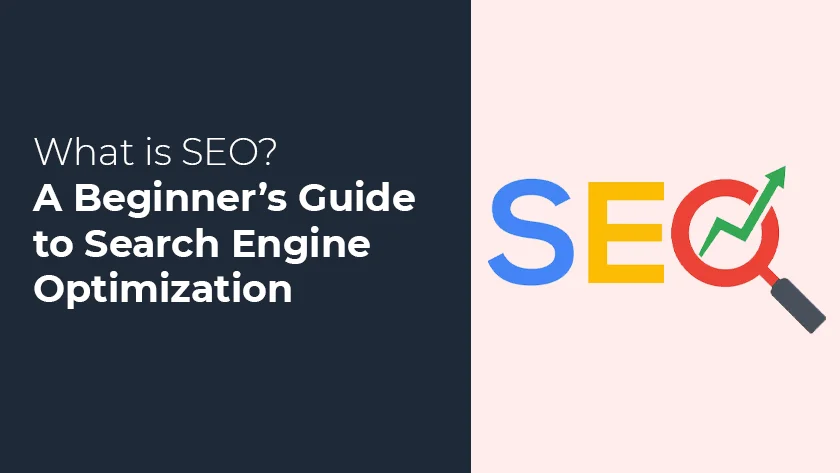In the ever-evolving digital landscape, businesses and individuals alike are constantly seeking ways to increase their online visibility. One of the most powerful tools for achieving this is Search Engine Optimization (SEO). Whether you’re a blogger, a small business owner, or someone looking to make a mark in the online world, understanding SEO is crucial. This comprehensive guide is designed to demystify SEO, explaining what it is, how it works, and how you can harness its power to grow your online presence.
What is SEO?
SEO stands for Search Engine Optimization. It is the practice of optimizing your website and its content to rank higher in search engine results pages (SERPs) for relevant queries. The goal is to increase the quantity and quality of organic (non-paid) traffic to your site.
When people search for information online using search engines like Google, they typically click on one of the top results. SEO helps ensure that your website appears in these top results by making it more relevant, accessible, and trustworthy in the eyes of search engines.
How Search Engines Work
To understand SEO, it’s essential to grasp how search engines operate. Here’s a simplified overview:
- Crawling: Search engines use bots (also known as spiders or crawlers) to scour the internet, discovering new and updated content.
- Indexing: Once content is found, it is stored and organized in a massive database called the index.
- Ranking: When a user performs a search, the search engine pulls relevant content from its index and ranks it based on hundreds of ranking factors.
Google, the most widely used search engine, uses complex algorithms and over 200 ranking signals to determine which pages should appear at the top.
The Three Pillars of SEO
SEO can be broken down into three main categories:
1. On-Page SEO
On-page SEO involves optimizing individual pages on your website to rank higher and earn more relevant traffic. Key elements include:
- Keyword Research: Finding the right keywords to target based on search volume, competition, and relevance.
- Content Optimization: Creating high-quality, relevant, and keyword-optimized content.
- Title Tags and Meta Descriptions: Writing compelling and keyword-rich meta tags.
- URL Structure: Keeping URLs short, descriptive, and keyword-friendly.
- Internal Linking: Linking to other relevant pages within your website.
- Image Optimization: Using descriptive file names, alt text, and proper formatting.
2. Off-Page SEO
Off-page SEO refers to actions taken outside of your website to impact your rankings within SERPs. This includes:
- Backlink Building: Acquiring high-quality backlinks from reputable websites.
- Social Signals: Social media engagement can indirectly influence SEO.
- Brand Mentions: Getting your brand mentioned on other websites.
- Guest Blogging: Writing content for other sites to gain exposure and backlinks.
3. Technical SEO
Technical SEO focuses on improving the backend structure and foundation of your website. Key aspects include:
- Site Speed: Faster websites offer a better user experience and are favored by search engines.
- Mobile-Friendliness: Ensuring your site is responsive and works well on all devices.
- Secure Website (HTTPS): Security is a ranking factor.
- XML Sitemaps: Helps search engines understand your site structure.
- Robots.txt: Directs search engine bots on which pages to crawl or avoid.
Latest Google SEO Updates and Their Impact
Google regularly updates its algorithms to provide better search results. Recent updates have emphasized:
- Helpful Content Update: Focus on people-first content that genuinely answers users’ questions.
- Core Web Vitals: Measures of site speed, interactivity, and visual stability.
- E-E-A-T (Experience, Expertise, Authoritativeness, Trustworthiness): Content must be written by credible sources with real experience and expertise.
- Spam Updates: Targeting low-quality and manipulative SEO tactics.
Understanding and adapting to these updates is crucial for staying ahead in SEO.
SEO Best Practices for Beginners
Here are some actionable tips to get started with SEO:
- Start with Keyword Research: Use tools like Google Keyword Planner, Ahrefs, or SEMrush.
- Create Quality Content: Focus on solving problems and answering questions your audience has.
- Optimize Your Pages: Include keywords in strategic places like titles, headers, and throughout the content.
- Ensure Mobile Compatibility: Use responsive design and test your site on multiple devices.
- Improve Page Speed: Compress images, use caching, and choose a reliable hosting provider.
- Build Backlinks Naturally: Reach out to other websites and create shareable content.
- Monitor Your Performance: Use tools like Google Analytics and Google Search Console.
Common SEO Mistakes to Avoid
- Keyword Stuffing: Overusing keywords can lead to penalties.
- Duplicate Content: Always aim for original and unique content.
- Ignoring Mobile Users: A large portion of web traffic is mobile.
- Neglecting Technical SEO: Backend issues can hurt rankings.
- Buying Links: This is against Google’s guidelines and can result in penalties.
The Importance of User Experience (UX) in SEO
Google increasingly values user experience. A site that’s easy to navigate, quick to load, and provides valuable content will perform better in search results. Key UX considerations include:
- Clear Navigation
- Fast Load Times
- No Intrusive Interstitials
- Accessibility
- Engaging and Readable Content
Tools to Help You With SEO
There are numerous tools available to help you on your SEO journey:
- Google Search Console
- Google Analytics
- Ahrefs
- SEMrush
- Moz Pro
- Yoast SEO (for WordPress)
Final Thoughts
SEO is not a one-time effort but an ongoing process. It requires continuous learning, testing, and adapting to new changes in algorithms and user behavior. While it might seem overwhelming at first, understanding the basics and implementing best practices can significantly impact your website’s visibility and success.
Whether you’re launching a blog, running an e-commerce store, or offering professional services, SEO can be the difference between getting lost in the crowd or standing out in the digital world. Start with the basics, stay updated, and keep optimizing.
By mastering SEO, you’re not just improving your search rankings; you’re building a sustainable online presence that attracts, engages, and converts visitors into loyal customers or readers.

Leave a Reply